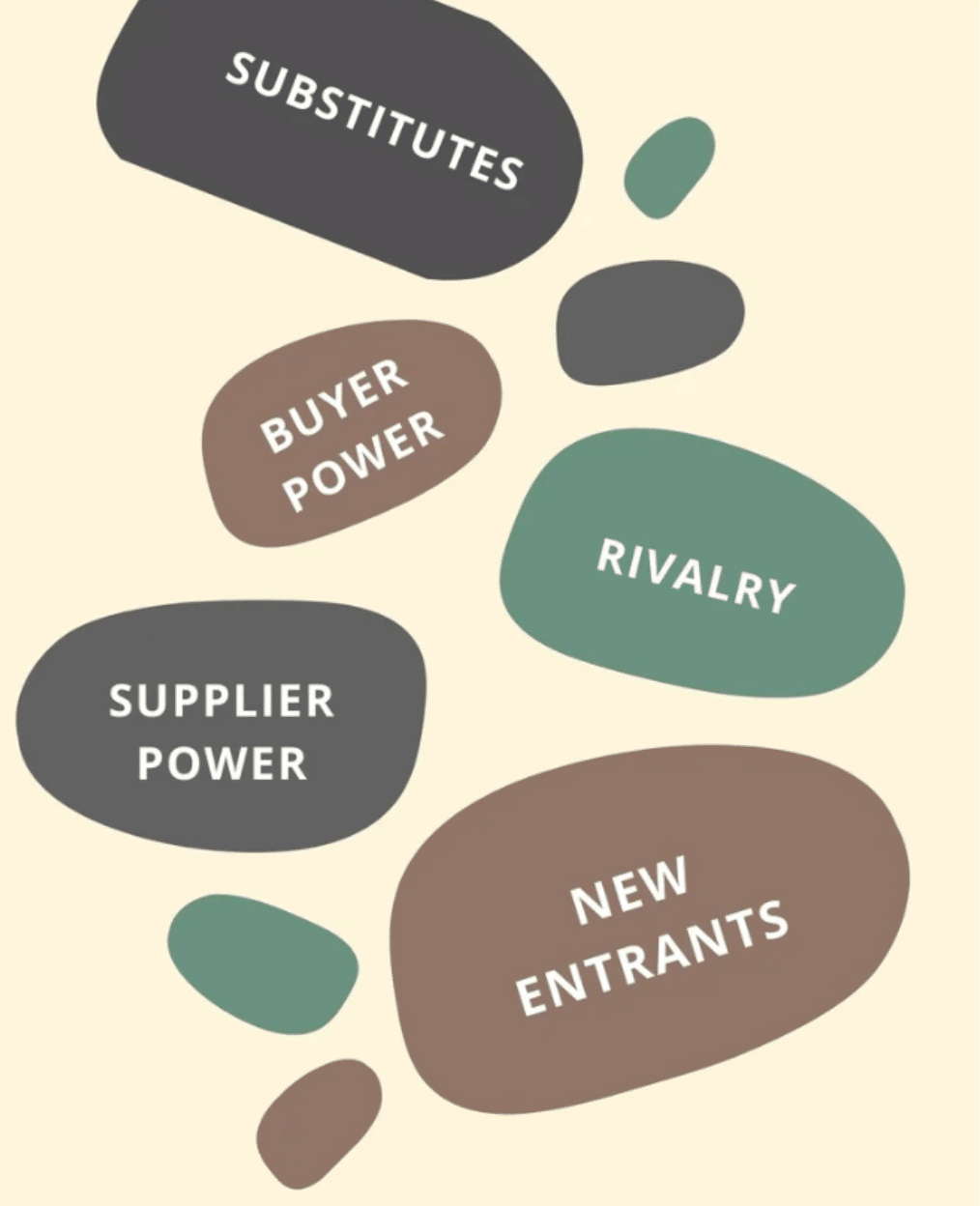In today’s competitive business landscape, understanding your market is crucial for success, especially for startups. Market research is not just a buzzword; it’s an essential tool that can make or break a new business. If you’re launching a startup, you must know your target audience, the competitive landscape, and the demand for your product or service.
In this comprehensive guide, we’ll explore “how to do market research for a startup,” covering everything from understanding what market research is to analyzing specific examples. We’ll look into a startup market research template, identify tools and resources, and even delve into real-world startup analysis examples.
If you’re wondering how Globemonitor can assist you in conducting such research tailored to your startup’s unique needs, feel free to contact us. Our team of experts can provide personalized insights and solutions to help your startup thrive.
Whether you’re just getting started or looking to refine your existing market research approach, this guide has something valuable for you. So, grab a cup of coffee, settle in, and let’s dive into the fascinating world of market research for startups.
Understanding Market Research

Market research is the process of gathering, analyzing, and interpreting information about a market, including information about potential customers, competitors, and the overall industry. It’s an essential aspect of business planning, especially for startups aiming to identify opportunities and risks.
What exactly does market research entail? It’s more than just numbers and charts; it’s about understanding people’s behaviors, preferences, and pain points.
By knowing what is market research, startups can make informed decisions that align with their target audience’s needs.
In the startup ecosystem, market research acts as a compass, guiding businesses toward success. Without thorough research, a startup might launch a product that no one wants or enter a market already saturated with similar offerings.
- Identifies Opportunities and Threats: Through careful analysis, startups can discover unmet needs in the market and design products or services to fill those gaps.
- Reduces Risks: By understanding the competitive landscape and analyzing secondary market data, startups can avoid costly mistakes.
- Informs Marketing Strategies: Knowing how to do market research for a startup enables businesses to create targeted marketing campaigns that resonate with their audience.
Conducting market research is not a one-size-fits-all process. Different startups may require different approaches, tools, and methodologies. Globemonitor provides tailored solutions to help startups conduct effective market research.
Remember, market research is not a one-off task; it’s an ongoing process that requires continuous effort and attention. Investing in market research early on can set the stage for long-term success and growth.
How to do market research for a startup?

1- Identifying Target Audience and Consumer Analysis
Knowing your customers’ wants and needs is foundational. By defining and segmenting the target audience, you can create personalized experiences that resonate with potential customers.
- Demographics: Age, gender, income, etc.
- Psychographics: Interests, values, lifestyles, etc.
- Consumer Behavior Analysis: Buying patterns, preferences, and pain points.
2- Analyzing Market Size and Potential Growth
Understanding the market size and forecasting potential growth is crucial for evaluating opportunities.
- Total Addressable Market (TAM): Overall revenue opportunity.
- Segmented Addressable Market (SAM): Portion of TAM targeted by your products.
- Serviceable Obtainable Market (SOM): Portion of SAM you can realistically capture.
Check out our complete guide to TAM, SAM, and SOM for an in-depth understanding of the topic.
3- Researching Competitors and Competitive Analysis
Analyzing competitors provides insights into your industry and helps to find your unique selling proposition (USP).
- Identify Key Competitors: Who are the main players?
- Competitor SWOT Analysis: Strengths, Weaknesses, Opportunities, Threats.
- Porter’s Five Forces Analysis: Competition, suppliers, buyers, substitutes, and potential entrants.
Learn how to do a competitor analysis in our step-by-step guide.
You can also learn how to write a SWOT by reading SWOT Analysis | 10 steps for writing a Powerful one
Discover how SWOT analysis serves as a pivotal tool for understanding the restaurant landscape in our post: SWOT Analysis for Restaurant: A 2023 Comprehensive Guide
4- Tracking Market Trends
Keeping abreast of emerging trends helps to position your startup ahead of the curve.
- Industry Dynamics: What’s shaping your market?
- Emerging Technologies: Are there any new technologies influencing your industry?
- Regulatory Changes: How are laws and regulations affecting the market?
Conducting Primary Research for In-Depth Insights

Designing Surveys and Questionnaires
Surveys and questionnaires can be powerful tools to gather firsthand information from your target audience. Here’s how to approach them:
- Identify Objectives: What do you need to find out?
- Choose the Target Audience: Who will provide the most relevant insights?
- Design Questions: Craft questions that are clear, unbiased, and relevant to your research.
- Distribute Surveys: Utilize online platforms, social media, or direct engagement.
Remember, the goal is to uncover insights that secondary research can’t provide, such as specific preferences, needs, or opinions related to your product or service.
Conducting Interviews and Focus Groups
Personal interactions through interviews and focus groups can provide deeper understanding and qualitative data.
- Plan Ahead: Determine the purpose, format, and participants.
- Prepare Questions: Create open-ended questions that encourage discussion.
- Conduct the Sessions: Be attentive, unbiased, and create a comfortable environment.
- Analyze the Results: Draw insights, patterns, and conclusions from the discussions.
This hands-on approach can reveal nuanced perceptions and emotions that might be missed in written surveys.
Utilizing Online Tools and Platforms
In today’s digital age, online tools can greatly facilitate market research.
- Social Media Analysis: Track customer opinions and trends.
- SEO Tools: Research popular keywords and phrases related to your industry, such as “how to do market research for a startup.”
- Analytics Platforms: Monitor web traffic, user behavior, and conversion rates.
Online tools enable real-time insights and allow for scalable data collection and analysis.
Field Testing and Observations
Actual field testing and observations can validate hypotheses and provide real-world insights.
- Prototype Testing: Allow potential customers to interact with a prototype or beta version.
- In-Store Observations: Observe customer interactions with products in a retail setting.
- Gather Feedback: Collect real-time feedback and adjust your strategies accordingly.
Field testing provides a practical perspective that can greatly inform product development and marketing strategies.
Tools and Resources for Market Research

Conducting effective market research requires utilizing various tools and resources to gather, analyze, and interpret data. Here’s a guide to some essential tools and resources that startups can employ in their market research efforts:
Online Market Research Software and Platforms
- Survey Tools: Tools like SurveyMonkey and Google Forms for creating and distributing online surveys.
- Analytics Platforms: Google Analytics to understand web traffic and user behavior.
- SEO Tools: Moz and SEMrush for keyword analysis and optimizing content, such as for the phrase “how to do market research for a startup.”
- Customer Relationship Management (CRM) Systems: HubSpot and Salesforce to track customer interactions and trends.
Industry Reports and Statistical Data
- Government Databases: Sources like the U.S. Census Bureau for demographic data.
- Industry Associations: Access reports from industry-specific organizations.
- Statistical Websites: Utilize tools like Statista for various global statistics.
Social Media and Online Communities
- Social Media Monitoring Tools: Tools like Hootsuite to track brand mentions and trends.
- Online Forums: Engage with communities on Reddit and industry-specific forums to gain insights into customer needs and opinions.
Libraries and Academic Resources
- University Libraries: Many universities offer free access to academic papers and industry journals.
- Online Academic Databases: Websites like Google Scholar for research papers and studies.
Competitor Analysis Tools
- Competitor Tracking Platforms: Tools like SimilarWeb to monitor competitors’ web performance and marketing strategies.
- Benchmarking Tools: Utilize platforms to compare your performance against industry standards.
Assistance from Professionals
- Consult with Market Research Firms: Engage with professional Market Research firms for specialized insights.
- Consider Globemonitor’s research services for customized market research solutions tailored to startups.
These tools and resources provide a diverse set of options to conduct market research efficiently and effectively. From software platforms to industry reports, and professional assistance, these resources empower startups to gain insights and make informed decisions. Depending on your specific needs and budget, you can mix and match these tools to create a robust market research strategy for your startup.
Conclusion
Conducting market research for a startup is an essential process that guides decision-making, identifies opportunities, and mitigates risks. Whether you’re defining your target audience, analyzing market trends, conducting in-depth primary research, or utilizing advanced tools and resources, the journey of market research is both challenging and rewarding.
Here’s what you can take away from this comprehensive guide:
- Understand Your Market: Get to know your customers, competitors, and the overall landscape.
- Use Diverse Research Methods: Employ both primary and secondary research for a well-rounded perspective.
- Leverage Modern Tools: Utilize software, online platforms, and professional services to enhance efficiency.
- Learn from Real-life Examples: Analyze market research examples to replicate success and avoid pitfalls.
- Consider Professional Assistance: Organizations like Globemonitor can offer specialized support tailored to your startup’s needs.
Remember, market research is not a one-time activity but an ongoing process that evolves with your business. Keep exploring, learning, and adapting to stay ahead in the competitive startup environment.
Whether you’re a budding entrepreneur searching for “how to do market research for a startup” or a seasoned professional seeking new insights, this guide has covered essential steps, methodologies, and tools to empower your market research journey.
Frequently Asked Questions (FAQ)
How to do market research for a startup?
Doing market research for a startup involves defining the research objectives, identifying the target audience, collecting data through various methods (surveys, interviews, competitor analysis, etc.), analyzing the data, and drawing actionable insights.
What is the best type of market research for a startup?
The best type of market research for a startup is typically a combination of qualitative and quantitative research. Utilizing a blend of surveys, interviews, analytics tools, and industry insights enables a startup to gain a well-rounded perspective of the market.
What are the questions for market research for startups?
The questions for market research for startups can vary depending on the goals, but they often include inquiries into customer needs, market trends, competitor strategies, pricing preferences, and product or service feedback.
What are the types of market research for startups?
Startups can engage in both primary and secondary market research. Primary research involves collecting original data through surveys, interviews, focus groups, and field observations. Secondary research relies on existing data, including industry reports, academic studies, and online resources.
What are the steps to do market research?
The steps to conduct market research include defining objectives, identifying the target market, selecting research methods, collecting data, analyzing results, and making informed business decisions.
A quick overview of the topics covered in this article.
Latest Posts
December 21, 2025
December 21, 2025
Subscribe to our newsletter
Get valuable insights and business guidance sent to your email.













